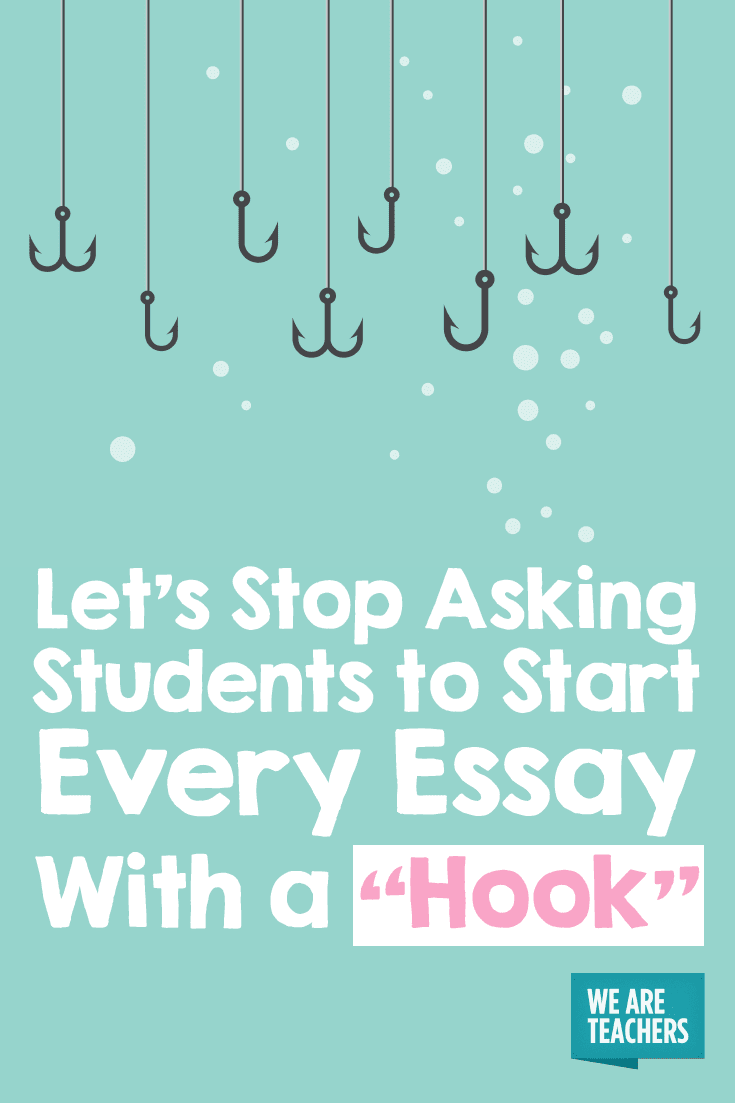I’ve had my share of reluctant writers in my classroom, including a student who wrote nothing the first three months of the school year. I’m surprised it doesn’t happen more often, if I’m honest, given how complex writing can be.
Many adults find writing challenging for the same reason students do: writing requires a lot of the writer. You have to think up what you want to write, organize your thinking, and then hold it in your mind while you put it on the page in the right order. Oh, and at the same time you also have to remember to include all that capitalization, punctuation, grammar and spelling. Compared with speaking, writing is basically a series of cognitive backflips.
Just getting started on an essay or other writing assignment is often where students struggle the most. Take every reason why writing is so difficult and magnify it by the emotions students bring to the table when a task is difficult. No wonder students dawdle, resist and even hide in the bathroom when it’s time to write.
Requiring hooks for essays often adds to the challenge of writing

Then there’s this thing that we do as teachers, which doesn’t help matters: we require students to write a creative and catchy first sentence called a “hook.”
I understand why we require hooks for essays. We want our students to think about their audience and practice writing engaging first sentences. I don’t disagree with hooks on their own, as they do strive to teach key skills.
The problem is that we ask students to write these hooks on top of a lot of other writing demands. When we require a hook first thing, we are basically saying, “You can’t move on until you write something creative and engaging!” Should we be surprised they get frustrated and stuck?
But I teach my students how to write hooks!

In an effort to support students with writing hooks for essays, we give them ideas and templates. We encourage them to use a quote or ask a question. What ends up happening, though, is that a majority of students end up writing the same three hooks. (Google “hook essay ideas” and you will see what I mean.)
A few students are great at writing hooks, but I suspect they are simply great at writing. Otherwise, we get 25 variations on “Have you ever had to tell a friend bad news?” It’s almost the opposite outcome of what we are trying to teach.
How to get students started writing without a freakout

1. Eliminate the hook
Again, I understand the intent of teaching hooks for essays, but requiring them feels like a tacked-on challenge given everything else we throw at our students when we ask them to write. While it’s a nice skill to have, very few real-life writing tasks require you to razzle-dazzle your audience first thing.
What if you spent that instructional time making sure students have the fundamentals? A straightforward topic sentence sounds boring, I get it, but do your students know how to write one? Do they know how to take that sentence and go further with the topic adding context and relevant details? Take stock of what you really want students to know how to do and it might shift how you spend your teaching time.
2. Teach hooks separately
Part of my frustration with hooks is that they paralyze many young writers before they’ve even started writing. While I want my students to thoughtfully engage their audience, it’s more important to me they can consistently begin drafting what they want to say. That’s hard to do if they feel stuck on the first sentence.
One way to diffuse the emotion around hooks is to teach them separately from the essay itself. Give students random and even silly topics and have them brainstorm possible first sentences. With space to focus on enticing prospective readers, students are more likely to come up with the kind of creative, out-of-the-box first sentences you know they are capable of writing.
3. Give extra credit for good hooks
Consider giving extra credit for a compelling hook rather than making it a required element. This will encourage students to write hooks, but not penalize those students who find them difficult. Another option is to think about how you might teach students to write the hook last, as a finishing touch rather than a first step.


